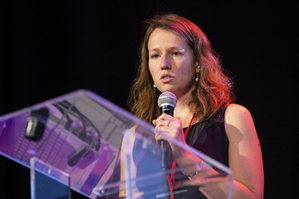Fastidious chemical decontamination after cyclophosphamide vial breaking in a compounding unit
3 October 2019
O. Petit1, J. Boucher1, M. Vasseur1,2, J. Courtin1, M. Pinturaud1, D. Allorge3, B. Decaudin1,2, N. Simon1,2, P. Odou1,21- CHU Lille, Institut de pharmacie, F-59000 Lille, France
2- Univ. Lille, EA 7365 – GRITA – Groupe de Recherches sur les formes Injectables et les Technologies Associées, F-59000 Lille, France
3- CHU Lille, Pôle de Biologie-Pathologie-Génétique, Unité Fonctionnelle de Toxicologie, F-59000 Lille, France

Introduction
Following various incident like vial breakage, significant amounts of cytotoxic antineoplastic drugs can accumulate in the occupational environment. Thanks to the monthly monitoring of the chemical contamination of our preparation unit, we found a high contamination by cyclophosphamide (CP) following a vial breakage in the storage area, despite the application of our procedure of treating the incident and cleaning.
Objective
To analyse the efficiency of a chemical decontamination procedure in the context of a massive CP contamination.
Materials and methods
Contamination was measured by a liquid chromatography coupled to mass spectrometry method, locally developed. For the CP, the dosage ranges between 1 and 2000 ng/100 cm2. Quantitative analyses were performed on surface-wiped samples from the floor and the caster of the storage wardrobe on which the vial broke on D16, D44, D65, D72, D106 and D134 and on D65, D72, D106 and D134, respectively. A mixture (80/20, v/v) of 10-2 M sodium dodecyl sulfate and 70% isopropanol (SDS/IPA) was used as a decontamination solution.
Results
Massive amounts of CP were found despite the application of the usual decontamination procedure. Contamination of the floor was higher than 2000 ng/100 cm2 at D44. Consequently, 3 decontaminations using SDS/IPA were performed at D61, D68 and D71. After decontamination, the values (ng/100 cm2) were 49, 316, 2.3 and 45 at D65, D72, D106 and D134, respectively. These results were closer to the common basal contamination in the unit (median of basal contamination: 3.2 ng/100cm2). The values measured on the caster (ng/100 cm2) remained high despite the successive decontaminations: 43, 565, 1978 and 338 at D65, D72, D106 and D134, respectively.
Discussion/Conclusion
Classified as carcinogen by the International Agency for Research on Cancer, CP represents a real hazard in case of exposure. The ongoing monitoring in our unit allowed us to identify the inefficiency of our procedure and show the difficulty to eliminate a massive CP contamination. The SDS/IPA was chosen because it has been proven to be effective on many contaminants, including CP.1-3 It is now newly mentioned in the latest American Society of Health-System Pharmacists standards4. Although being efficient on the floor, the decontamination process appears unsuitable for the caster whose surface nature and porosity are different. This work demonstrates the importance to improve the procedure of incident management by close monitoring of the surface contamination and repeated chemical decontamination adapted to contaminants and surfaces.
References
1- Queruau-Lamerie T, Ann Occup Hyg. 2013;57(4):456 69
2- Anastasi M, Ann Occup Hyg. 2015;59(7):895 908
3- Vasseur M, PLOS ONE. 2018;13(8)
4- American Society of Health-System Pharmacists, Am J Health-Syst Pharm. 2018;7:1996-2031